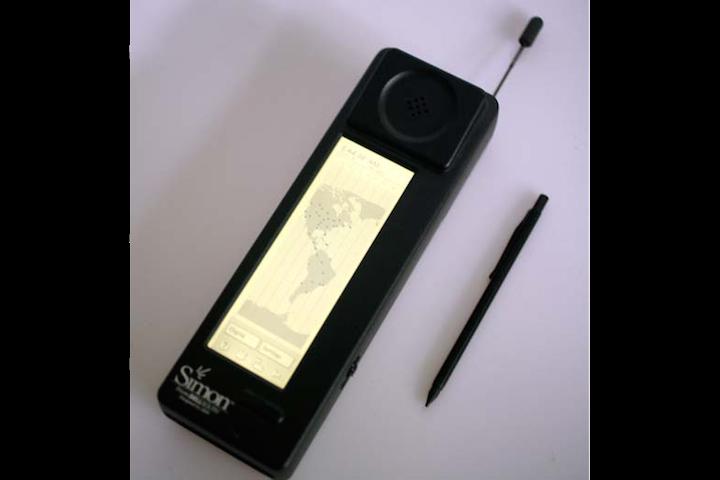
IBM’s Simon went on sale in August 1994, when it cost around $900, and despite being available to buy for just six months, managed to attract more than 50,000 buyers. What did you get for your money? Rather than an alphanumeric keypad, the Simon has a monochrome, 4.5-inch by 1.5-inch touch sensitive LCD screen, on which you could make notes, draw basic shapes, or use a keyboard. Faxing was big in the 90s, and the Simon could be used to send and receive them.
On the bottom of the device is a PCMCIA card slot, which allowed the phone to run different programs – or apps, as the kids call them today – including those to compose and send emails, display your calendar and manage a contact list. Flicking through the instruction manual (remember them?) reveals Simon had an early version of predictive text called PredictaKey, and that the included stylus had a regular ballpoint pen at one end.
Related: See our picks for the best smartphone of 2014
Simon was a bit of a beast though, weighing 500 grams and sharing a design similar to a walkie-talkie, it was hardly the most pocket-friendly device. Also, the massive, removable battery is said to last for about an hour. Finally, what early mobile phone would be complete without a leather case, and Simon came with one included in the pack.
The London Science Museum’s Information Age: Six Networks That Changed Our World exhibition celebrates innovation in the world of communications, and will include many devices and technologies which have never been publicly displayed. It begins on October 25 this year.




